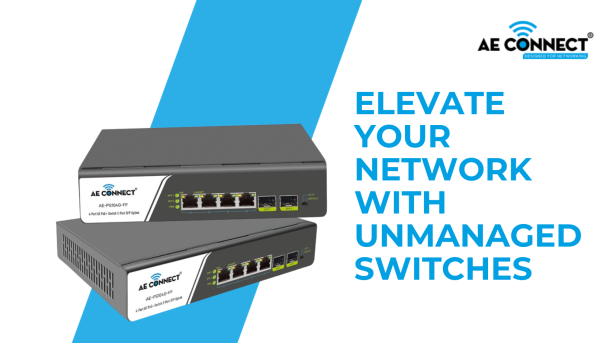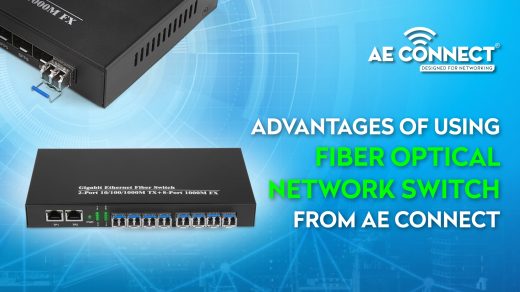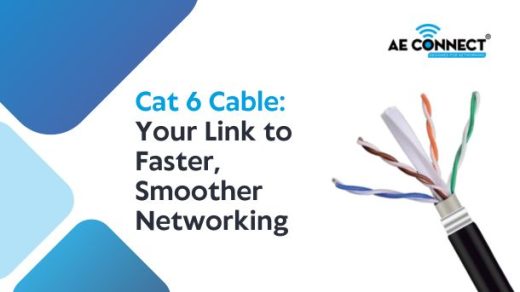Hey there, fellow tech enthusiasts!
Today, we’re diving into the mysterious world of unmanaged switch. If you’ve ever found yourself in a conversation about connectivity and networking and felt like people were speaking a different language, fear not! By the end of this guide, you’ll be the one dropping knowledge bombs about unmanaged switch like a pro.
Let’s get started!
Managed Switch vs Unmanaged Switch
Unmanaged switch and managed switches are two types of network switches, which are devices used to connect multiple computers or network devices within a local area network (LAN). The main difference between managed and unmanaged switch lies in the level of control and configuration that they offer to the user.
Unmanaged Switch:
Basic Functionality:
Unmanaged switch is the simpler of the two types. They are plug-and-play devices, meaning they operate out of the box with no configuration required. You simply plug in your devices, and the switch handles the rest.
No Configuration Options:
Unmanaged switches lack configuration interfaces or options. They are designed for small networks where simplicity is a priority.
Cost-Effective:
Unmanaged switches are generally less expensive than managed switches, making them a popular choice for home and small business networks with basic requirements.
Managed Switch:
Advanced Functionality:
Managed switches offer advanced features and capabilities that allow for greater control and optimization of the network.
Configuration Options:
Managed switches provide a user interface (either through a command line interface or a web-based graphical interface) that allows administrators to configure settings such as VLANs (Virtual Local Area Networks), Quality of Service (QoS), port mirroring, and more.
Monitoring and Troubleshooting:
Managed switches often include monitoring tools, statistics, and logging capabilities, which can be valuable for troubleshooting network issues and optimizing performance.
Security Features:
Managed switches may have security features such as access control lists (ACLs) and port security to enhance network security.
Choosing Between Managed and Unmanaged Switch:
Size and Complexity of the Network:
For small networks with straightforward connectivity needs, an unmanaged switches may be sufficient. Larger networks or those with specific requirements for segmentation, performance optimization, and security may benefit from a managed switch.
Budget:
Managed switches are typically more expensive than unmanaged switch. Consider your budget and the specific needs of your network when making a decision.
IT Expertise:
Managed switches require more knowledge and expertise to configure and optimize. If you have a skilled IT staff, a managed switch can provide greater control and customization. If simplicity is a priority and you lack advanced networking knowledge, an unmanaged switches might be more suitable.
How Do Unmanaged Switch Work?
Unmanaged switch is straightforward devices designed for simplicity and ease of use. Their primary function is to facilitate communication between devices within a local area network (LAN). Here’s a basic overview of how unmanaged switch work:
Plug-and-Play Operation:
Unmanaged switch operate on a plug-and-play basis. Once connected to a power source and the network devices (such as computers, printers, or other networked devices), the switch begins working immediately without any configuration required.
Packet Forwarding:
When a device connected to the unmanaged switches sends data to another device on the same network, the switch forwards the data packets only to the specific port where the destination device is connected. This process is known as packet forwarding.
MAC Address Learning:
Unmanaged switch use MAC (Media Access Control) addresses to make forwarding decisions. Each network device connected to the switch has a unique MAC address. The switch learns the MAC addresses of the devices connected to its ports as data packets are transmitted.
Broadcast and Collision Handling:
Unmanaged switch handle broadcast traffic and help prevent collisions in the network. Broadcast traffic is a type of communication where a message is sent to all devices on the network. The switch ensures that these broadcast messages are only forwarded to the ports where they are needed, reducing unnecessary network traffic.
In summary, unmanaged switch operate seamlessly out of the box, forwarding data packets between connected devices without the need for user configuration. They are ideal for simple network setups where basic connectivity is the primary requirement.
How to Use an Unmanaged Switch?
Using an unmanaged switch is typically a simple process, as these devices are designed to be plug-and-play with minimal user intervention. Here’s a step-by-step guide on how to use an unmanaged switch:
1. Gather Equipment:
Unmanaged Switch: Acquire the unmanaged switch that suits your needs. Ensure you have enough ports for all the devices you plan to connect.
Ethernet Cables: You’ll need Ethernet cables to connect your devices to the switch.
2. Choose a Location:
Place the unmanaged switch in a central location where you can easily connect all the devices you intend to link to the network.
3. Power Up the Switch:
Connect the power adapter to the unmanaged switch and plug it into a power source. Unmanaged switches support Power over Ethernet (PoE) if your devices are PoE-enabled.
4. Connect Devices:
Use Ethernet cables to connect the devices (computers, printers, etc.) to the available ports on the unmanaged switch. Insert one end of the Ethernet cable into a device’s Ethernet port and the other end into an available port on the switch.
5. Connect to Existing Network:
If you have an existing network (e.g., a router), connect one of the unmanaged switch’s ports to the existing network using an Ethernet cable. This is often referred to as an “uplink” connection.
6. Power On Devices:
Turn on the devices connected to the unmanaged switch.
7. Verify Connectivity:
Check the status indicators on the front of the unmanaged switch. Most switches have LEDs (Light Emitting Diodes) next to each port indicating connectivity and activity. A lit LED usually indicates a connected and active device.
8. Network Testing (Optional):
If you want to verify network connectivity, you can perform basic tests such as pinging devices within the network to ensure they can communicate.
9. No Configuration Necessary:
Since unmanaged switches are plug-and-play, there is no configuration required. The switch will automatically handle the forwarding of data packets between connected devices.
10. Expansion (Optional):
If you need to expand your network, you can connect additional devices to the available ports on the unmanaged switch.
That’s it! These steps will help you set up a network with minimal effort. Keep in mind that unmanaged switches are suitable for straightforward network setups, but if you require advanced features or customization, you may need a managed switch.
Can an Unmanaged Switch Manage VLAN Traffic?
Typically, traditional unmanaged switches do not have the capability to control VLAN (Virtual Local Area Network) traffic. Unmanaged switches operate at Layer 2 of the OSI (Open Systems Interconnection) model and lack the necessary features to support VLAN functionality.
VLANs are a way of logically segmenting a network into distinct broadcast domains, even if the devices share the same physical network infrastructure. VLANs are a feature associated with managed switches, which have the ability to configure and handle VLAN traffic.
If you require to handle VLAN functionality in your network, you would need to use a managed switch. Managed switches provide a user interface that allows you to configure VLANs, assign ports to specific VLANs, and control the flow of VLAN-tagged traffic. With a managed switch, you can create separate VLANs to improve network security, manage broadcast traffic, and enhance overall network performance.
Unlocking Seamless Connectivity with AE Connect
Now that we’ve demystified the world of unmanaged switches, let us introduce you to AE Connect – the wizards of connectivity and networking solutions. With two decades of expertise, we are your go-to source for the best unmanaged switches in the game that are manufactured in India.
We at AE Connect don’t just provide switches; we provide seamless connectivity solutions and design power supplies in-house to suit your needs. Whether you’re running a bustling office or just want a hiccup-free home network, we have got your back.
Why AE Connect?
Reliability: Our unmanaged switches are built to last, ensuring a seamless flow of data without a hiccup.
Easy Integration: Just like unmanaged switches, we keep it simple. Plug in and play – no headaches.
Cutting-Edge Technology: Stay ahead of the curve with AE Connect’s state-of-the-art networking solutions.
24/7 Support: Got a question or a concern? We are there, around the clock.
Upgrade your network, simplify your life, and let the data flow seamlessly with AE Connect‘s unmanaged switches.
Conclusion
In a nutshell, understanding unmanaged switches is key to optimizing network setups. Unmanaged switches offer plug-and-play simplicity, making them cost-effective for small networks. However, for advanced features, consider managed switches.
AE Connect stands out with reliable, easy-to-integrate unmanaged switches, providing tailored solutions for seamless connectivity. Upgrade your network effortlessly with AE Connect‘s state-of-the-art solutions, ensuring a reliable and hiccup-free experience.




